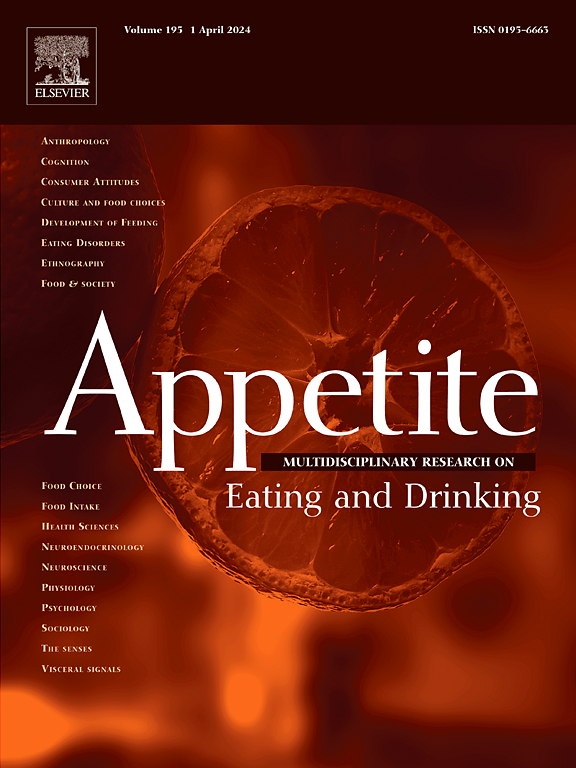Regretful bites: Exploring the influence of anthropomorphized food on children's food choices and consumption
IF 4.6
2区 医学
Q1 BEHAVIORAL SCIENCES
引用次数: 0
Abstract
Anthropomorphizing food is a prevalent marketing technique, particularly for children; however, its impact on their choices and consumption remains largely unexplored. We conducted two experiments to investigate how anthropomorphism affects food choices and consumption in four- and five-year-old children. In Study 1 (within-subjects design, N = 72), children were shown both anthropomorphized and non-anthropomorphized cookies and given a plastic coin. They were asked to choose the cookie they would like to exchange the coin for. The results indicated that a greater proportion of children selected the anthropomorphized cookie. In Study 2 (between-subjects design, N = 144), children were given either an anthropomorphized or a non-anthropomorphized cookie and allowed to eat as much as they wished. Those who received the anthropomorphized cookie consumed less and reported more feelings of regret compared to those who were given a non-anthropomorphized cookie. Together, these findings suggest that while anthropomorphic features might increase food choice, they paradoxically decrease actual consumption while increasing feelings of regret.
遗憾的一口:探索拟人化食物对儿童食物选择和消费的影响。
食物拟人化是一种普遍的营销手段,尤其是对儿童而言;然而,拟人化对儿童选择和消费的影响在很大程度上仍未得到探讨。我们进行了两项实验,研究拟人化如何影响四五岁儿童的食物选择和消费。在研究 1(被试内设计,N = 72)中,我们向儿童展示了拟人化和非拟人化饼干,并给他们一枚塑料硬币。他们被要求选择他们想用硬币交换的饼干。结果显示,选择拟人化饼干的儿童比例较高。在研究 2(主体间设计,N = 144)中,给儿童提供了拟人化或非拟人化饼干,并允许他们想吃多少就吃多少。与那些得到非拟人化饼干的儿童相比,那些得到拟人化饼干的儿童吃得更少,并报告了更多的后悔情绪。这些研究结果表明,虽然拟人化特征可能会增加人们对食物的选择,但矛盾的是,它们会减少实际消费,同时增加后悔的感觉。
本文章由计算机程序翻译,如有差异,请以英文原文为准。
求助全文
约1分钟内获得全文
求助全文
来源期刊

Appetite
医学-行为科学
CiteScore
9.10
自引率
11.10%
发文量
566
审稿时长
13.4 weeks
期刊介绍:
Appetite is an international research journal specializing in cultural, social, psychological, sensory and physiological influences on the selection and intake of foods and drinks. It covers normal and disordered eating and drinking and welcomes studies of both human and non-human animal behaviour toward food. Appetite publishes research reports, reviews and commentaries. Thematic special issues appear regularly. From time to time the journal carries abstracts from professional meetings. Submissions to Appetite are expected to be based primarily on observations directly related to the selection and intake of foods and drinks; papers that are primarily focused on topics such as nutrition or obesity will not be considered unless they specifically make a novel scientific contribution to the understanding of appetite in line with the journal's aims and scope.
 求助内容:
求助内容: 应助结果提醒方式:
应助结果提醒方式:


